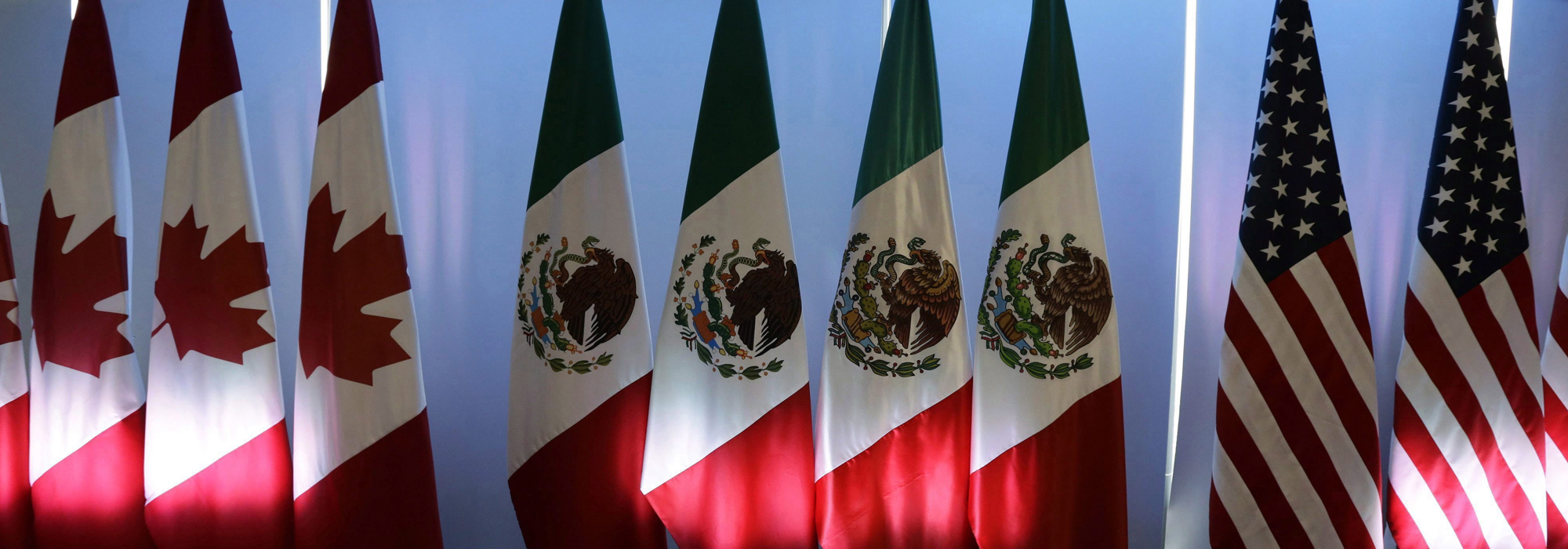
As many Americans spend this week making grocery lists and travel arrangements for family Thanksgiving gatherings, at least one cohort has put holiday plans on hold for a few days. Instead of shopping for cranberries and turkey for the big feast, US trade negotiators are in Mexico City, with their Canadian and Mexican counterparts, working through a long menu of issues related to NAFTA.
This marks the fifth of at least seven rounds of NAFTA negotiations. One of the most prevalent and least explored dynamics so far in these talks is the transformative role that technology has played in our economy, and what the rules of engagement should be for a digital chapter of NAFTA.
That we need such a chapter is in little doubt. Digital technologies are creating enormous opportunity in every sector of the economy. Some estimates peg digital trade at half of all trade globally, and growing.
Thanks to countless innovations in recent years, every sector of the economy is undergoing profound change. Digital technologies are enabling new business models, restructuring industries, and creating enormous opportunity. Even hundred-year-old industrial companies are becoming technology companies, in order to compete globally.
For example, with technology that wasn’t imagined when NAFTA was enacted 24 years ago, in Kitimat, British Columbia, Rio Tinto is turning out some of the lowest carbon footprint aluminum ever produced. Digital transformation at Barrick means leveraging data, analytics, and deep machine learning (a form of artificial intelligence) to make the mining business more safe, productive, and transparent. The Campbell’s Soup Company uses radio-frequency identification and other technologies to efficiently track shipments, comply with regulations and streamline production.
All of these advancements rely on digital trade. By modernizing NAFTA for the digital age, we will strengthen the North American economy, accelerate growth, and promote the creation of well-paid knowledge sector jobs.
A “NAFTA 2.0,” once negotiated and enacted, could set the global standard for trade agreements in the digital economy era.
In 1993, NAFTA was widely viewed as the most modern trade agreement of its time — the first to combine a developing country with developed countries, the first with contemporary intellectual property rights protections, and the first to contain labour and environmental provisions, albeit as side amendments. A “NAFTA 2.0,” once negotiated and enacted, could set the global standard for trade agreements in the digital economy era.
In order to get there, we must confront long-standing concerns that have created a political climate in which candidates run and win on a platform opposed to free trade agreements. Here, it’s helpful to look at the data. Between 1994 and 2000, manufacturing jobs in the US actually increased. Contrary to popular belief, of the 5.6 million manufacturing jobs lost in the US between 2000 and 2010, nearly 88 percent are attributable to productivity gains made possible through technological innovation and automation.
Technological advancements, not NAFTA, contributed to these losses. Should we then stop all technical innovation? Of course not. As the pace of technological change accelerates and global trade increases, the answer is not to withdraw. The answer is to trade more.
Where globalization has contributed to job loss — to China, for example — we know that NAFTA encouraged the development and integration of cross-border supply chains, lowered costs and increased productivity, enabling us to better compete with other regions including China.
Rather than retreating from trade, we can and should identify opportunities to benefit from it. Further integrating our North American market — supply chains, labour markets, free flow of goods, services and data, and finally achieving regulatory harmonization — is the best way to compete effectively on the global stage.
To provide negotiators with a roadmap for navigating digital trade issues, the Canadian American Business Council created a task force to produce a Digital Framework for NAFTA. The report is near final, and contains a number of key recommendations:
Enable secure cross-border data flows. According to McKinsey, cross-border data flows generated $2.8 trillion in economic value in 2014 — a greater impact on world GDP than global trade in goods. Much of our data already transits the Canada-US border, often several times. Promoting cross-border data flows — with modern, technology-enabled privacy and security protections in place — will allow all parties to better leverage this currency of the 21st century.
Grow the continent’s digital infrastructure. The digital economy relies on three types of infrastructure: Physical — including fixed and mobile networks, standards and protocols, IT hardware and software, and devices; Policy — such as digital-friendly frameworks for privacy, security, and regulatory compliance; and People — the creative and skilled workforce needed to power the knowledge economy. A modernized NAFTA should promote a free and open Internet, harmonize digital-friendly policies, and promote a 21st century labour market.
Create an open market for digital products and services. Eliminating restrictions, tariffs, taxes and fees on digital goods and services and removing burdensome customs regulations will foster innovation and create efficiencies across all North American markets. Given the pace of development, NAFTA should also incorporate new digital services into the existing regulatory framework by default.
Smart approaches to intellectual property. Many technology breakthroughs were made possible because of limitations and exceptions in copyright law. Any changes to NAFTA’s IP framework should be informed by a deep understanding of the long-term implications to digital trade and innovation.
The North American trading block is a powerhouse platform for growth, and NAFTA — with a forward thinking digital chapter included — is a framework for prosperity. It makes sense to update the agreement that governs the world’s largest free trade area so it is once again the most modern in the world.
Photo: THE CANADIAN PRESS/AP, Marco Ugarte
Do you have something to say about the article you just read? Be part of the Policy Options discussion, and send in your own submission. Here is a link on how to do it. | Souhaitez-vous réagir à cet article ? Joignez-vous aux débats d’Options politiques et soumettez-nous votre texte en suivant ces directives.








